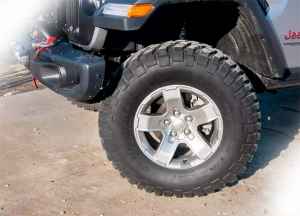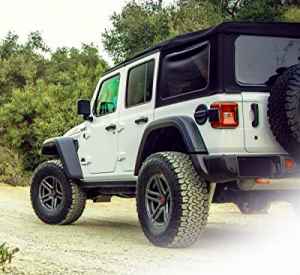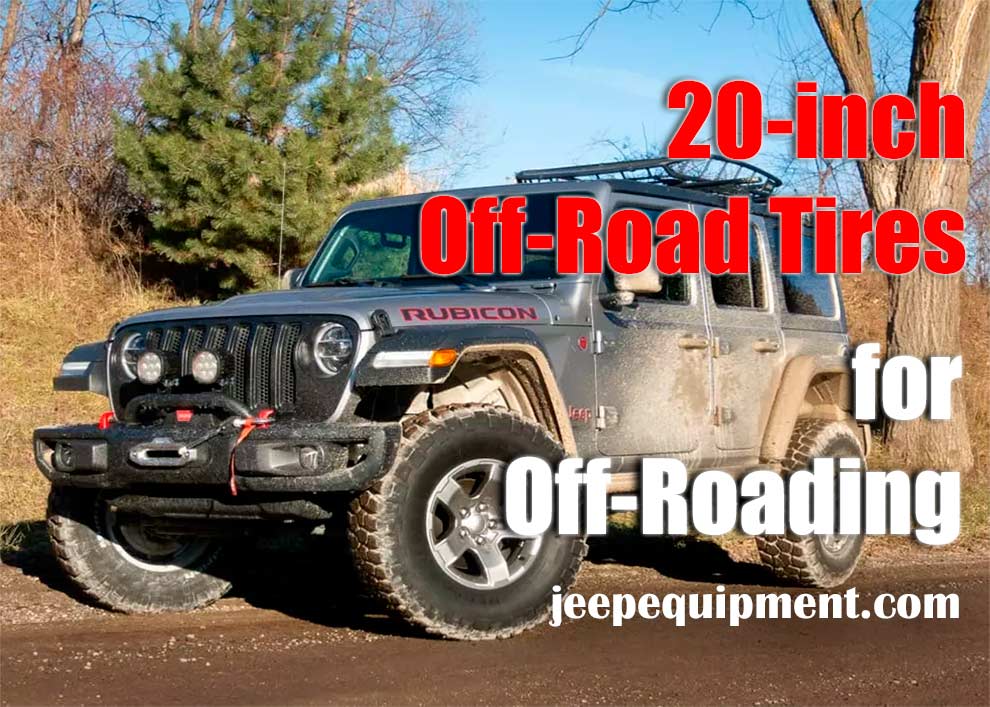If you’re just getting into off-roading, it can be pretty hard to figure out the perfect tire-wheel size for your vehicle. There are literally hundreds of brands on the market and dozens of different sizes. So, what should you go with? Say, you own a Jeep Wrangler and want to prepare your SUV for the wilderness. Will a 20-inch off-road tire be the right fit, or not?
How long will it serve, and what kind of challenges will you face? And will you be able to use it both for blasting through mud/snow/dirt and more “civilized” driving? We’ll talk about it all in this guide. First, we’ll figure out the difference between wheels, rims, and tires. Next, we’ll see how different sizes work with each other, and what you can expect besides, you can use this Tire Size Calculator. Let’s get to it!
Tires vs. Wheels vs. Rims: What’s the Difference?

Right now, a 34-inch wheel is the maximum size for an off-roading truck or SUV like the Wrangler, Renegade, or, say, F-150. The tires, in contrast, can be much bigger and reach up to 40-45. For that, you’ll need a proper suspension kit, of course. Otherwise, it will be almost impossible to stay in control of the vehicle.
The Pros of 20-inch Wheels: Looks and Potential
Alright, with the basics figured out, let’s talk about what benefits a 20-inch wheel-set can bring to the table. First of all, it can accommodate really large tires, and for some folks, that’s rather important. I’m talking about mud racers, UTV owners, and such. Plus, they look pretty cool, especially if you customize them a bit. This is actually it for the pros.
The Cons: Price, Size, Durability

As a result, the wheels don’t get enough protection from all the bumps on the road. Potholes are known to damage both the tires and the rims when there isn’t enough sidewall. And, as I just mentioned, larger wheels are more susceptible to damage. Compared to a 17-inch wheel, with a 20-incher, you’ll have a lot less room for airing down and flotation.
The Verdict
So, summing up, can you put a 20-inch off-road wheel on a Wrangler and hit the road? The answer is yes, you can. However, as we learned today, the cons strongly outweigh the pros. A 20-inch wheel is bulky, fragile, a lot more expensive, and leaves almost no space for the tire to “breathe”. It might look dope, though, and, with the right lift/suspension kit, it will be able to accommodate larger tires.
If you already have a 20-inch set, I wouldn’t recommend selling it. You’ll have a hard time with that. Besides, there are still some advantages to using big wheels. You could try airing them down to 17 PSI. That way, you’ll get more sidewall coverage, and the Wrangler will perform better. On the other hand, if you’re just thinking about buying a new set of wheels, I’d say go with a pack of 15- or 17-inch rims, as that will be a more reasonable investment.

Add Comment